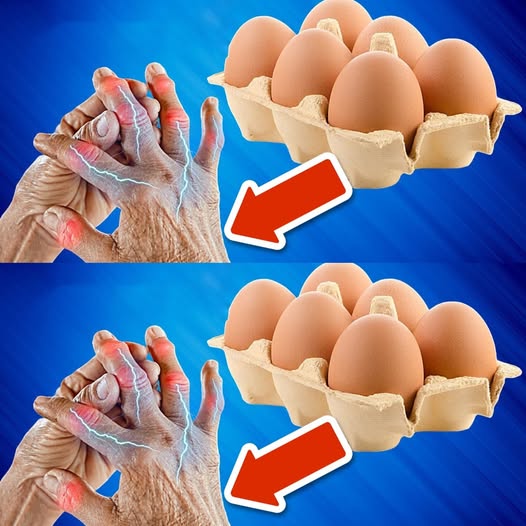Introduction

Sweet potatoes are a nutritional powerhouse. But did you know that how you eat them can make or break their health benefits?
Yes—while these vibrant root vegetables are packed with vitamins, minerals, and fiber, many people unknowingly sabotage their nutritional value through common preparation mistakes.
In this comprehensive guide, you’ll discover:
✅ 8 critical mistakes to avoid when cooking and eating sweet potatoes
✅ 15 science-backed health benefits you’ll unlock when you do it right
✅ Expert tips to maximize nutritional value
✅ Answers to frequently asked questions
If you’re serious about healthy eating, weight management, and disease prevention, this article will show you exactly how to make the most of sweet potatoes in your diet.
Why Sweet Potatoes Deserve a Spot on Your Plate
Sweet potatoes aren’t just delicious—they’re a superfood.
Here’s why they’re trending among nutritionists, athletes, and health-conscious eaters worldwide:
- Low-glycemic index: Great for stable blood sugar
- Rich in beta-carotene: Essential for eye health
- High in fiber: Supports digestion and weight control
- Loaded with vitamins & minerals: Including vitamin C, potassium, and manganese
A 2021 review published in Nutrients journal highlighted sweet potatoes as an excellent source of antioxidants with potential anti-inflammatory effects.
But all these benefits can vanish if you prepare them incorrectly.
Let’s fix that.
The 8 Mistakes to Avoid When Eating Sweet Potatoes
1️⃣ Overcooking Them Until Mushy
✅ Problem: Overcooking breaks down key nutrients like vitamin C and reduces fiber quality.
✅ Solution: Steam or roast them just until tender.
Pro Tip: Al dente sweet potatoes maintain better texture and nutrition.
2️⃣ Frying Them in Unhealthy Oils
✅ Problem: Deep-frying raises unhealthy trans fat levels and calorie count.
✅ Solution: Bake, air-fry, or grill using heart-healthy oils like olive or avocado oil.
According to the American Heart Association, replacing trans fats with monounsaturated fats can reduce heart disease risk by up to 15%.
3️⃣ Peeling Them Before Cooking
✅ Problem: The skin holds a significant portion of the fiber and nutrients.
✅ Solution: Scrub them clean and cook with the peel on.
One medium baked sweet potato with skin provides 4 grams of fiber—over 15% of your daily needs.
4️⃣ Drowning Them in Sugar or Syrup
✅ Problem: Popular “candied” recipes spike your sugar intake and negate blood sugar benefits.
✅ Solution: Use cinnamon, nutmeg, or a drizzle of honey for subtle sweetness.
This approach supports stable glucose levels, a key concern for diabetics.
5️⃣ Not Pairing with Healthy Fats
✅ Problem: Beta-carotene is fat-soluble—your body absorbs less without dietary fat.
✅ Solution: Add avocado, olive oil, nuts, or seeds to your meal.
A 2015 Journal of Nutrition study showed that adding fat triples beta-carotene absorption.
6️⃣ Microwaving Them Improperly
✅ Problem: Microwaving too long dries them out and reduces nutrients.
✅ Solution: Wrap them in a damp paper towel and monitor closely.
Microwaving is still a healthy option if done right.
7️⃣ Ignoring Portion Control
✅ Problem: Even healthy carbs can add up.
✅ Solution: Stick to ~½ cup to 1 cup cooked serving size.
For weight loss plans, maintaining portion sizes is critical.
8️⃣ Buying Non-Organic Without Washing Properly
✅ Problem: Pesticide residues can remain on conventional sweet potatoes.
✅ Solution: Choose organic when possible or wash/scrub thoroughly.
According to the Environmental Working Group, root veggies can harbor pesticide residues despite lower rankings on the Dirty Dozen list.
15 Incredible Health Benefits of Eating Sweet Potatoes Correctly
Now that you know what not to do, here’s what you gain by getting it right.
1️⃣ Supports Eye Health
Beta-carotene converts to vitamin A, preventing night blindness and age-related eye issues.
2️⃣ Stabilizes Blood Sugar
Their low glycemic index helps prevent blood sugar spikes—a key benefit for people with diabetes.
3️⃣ Enhances Digestive Health
High fiber content keeps your gut healthy and prevents constipation.
4️⃣ Boosts Immune Function
Rich in vitamin C and beta-carotene, both known for strengthening immunity.
5️⃣ Fights Inflammation
Anthocyanins and other antioxidants help reduce chronic inflammation.
6️⃣ Supports Weight Management
Fiber increases satiety, helping control calorie intake naturally.
7️⃣ Promotes Heart Health
Potassium lowers blood pressure; fiber and antioxidants reduce cardiovascular risk.
8️⃣ Improves Brain Function
Anthocyanins in purple varieties support cognitive health.
9️⃣ Strengthens Bones
Manganese and vitamin C contribute to collagen production and bone density.
10️⃣ Enhances Skin Health
Vitamin A promotes cell turnover; antioxidants fight skin aging.
11️⃣ Aids in Muscle Recovery
Potassium helps prevent cramps and supports muscle repair after workouts.
12️⃣ Supports Healthy Metabolism
B vitamins aid energy metabolism and reduce fatigue.
13️⃣ May Lower Cancer Risk
Antioxidants help neutralize free radicals linked to cancer development.
14️⃣ Balances Electrolytes
Potassium and magnesium maintain proper fluid balance, especially after exercise.
15️⃣ Provides Sustainable Energy
Complex carbs deliver slow-release energy, ideal for athletes and busy professionals.
Frequently Asked Questions (FAQs)
✅ Are sweet potatoes healthier than regular potatoes?
Sweet potatoes offer more beta-carotene and have a lower glycemic index, making them generally better for blood sugar control.
✅ Can diabetics eat sweet potatoes?
Yes—but portion control is essential. Their low GI means they raise blood sugar more slowly than many other carbs.
✅ Is it better to boil or bake sweet potatoes?
Baking helps preserve nutrients like beta-carotene. Boiling can cause nutrient loss into the water.
✅ Can you eat sweet potato skin?
Absolutely! The skin is rich in fiber and nutrients—just scrub it clean before cooking.
✅ How many sweet potatoes should I eat a day?
Aim for about ½ cup to 1 cup cooked, depending on your calorie needs and overall diet.
✅ Are purple sweet potatoes better for you?
Purple varieties are loaded with anthocyanins, antioxidants linked to brain and heart health.
✅ Is sweet potato good for weight loss?
Yes. High fiber and low energy density make them filling and weight-friendly.
✅ Can kids eat sweet potatoes daily?
Definitely. They’re safe, nutrient-rich, and loved by many children.
How to Choose and Store Sweet Potatoes for Maximum Nutrition
✔️ Choose: Firm, unblemished, small-to-medium roots
✔️ Store: In a cool, dark, well-ventilated space (not the fridge)
✔️ Use within: 2–4 weeks for best quality
Proper storage preserves flavor, texture, and nutrient content.
Actionable Tips to Maximize Sweet Potato Benefits
✅ Steam or bake instead of frying
✅ Cook with the skin on
✅ Use healthy fats to boost nutrient absorption
✅ Experiment with savory spices instead of sugar
✅ Include in balanced meals with protein and greens
✅ Rotate orange and purple varieties for diverse antioxidants
Conclusion
Sweet potatoes are more than just comfort food—they’re a nutritional treasure.
But to unlock their 15 incredible health benefits, you must avoid the 8 common mistakes that strip away their value.
By cooking them properly, pairing them with healthy fats, and respecting portion sizes, you transform sweet potatoes from an ordinary side dish into a supercharged health booster in your diet.
Embrace these strategies today to support your wellness goals—from weight management to disease prevention, vibrant skin to strong immunity.
Your health journey starts with the choices you make in the kitchen. So choose wisely, eat smart, and let sweet potatoes fuel your best life.


